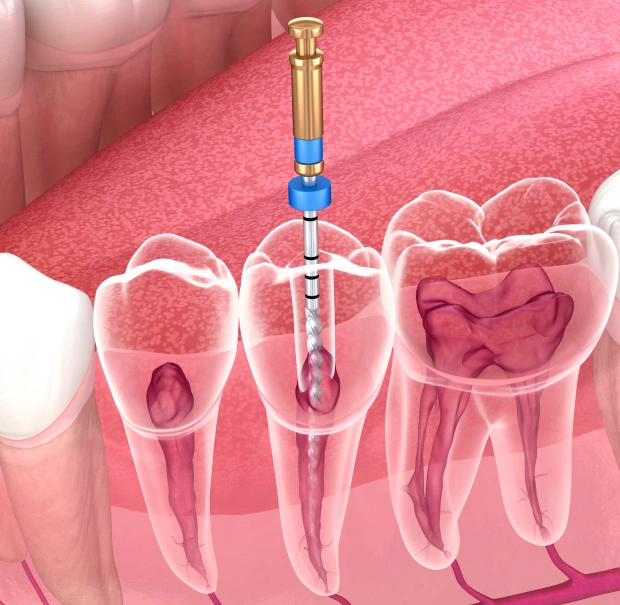
Endodontic Retreatment Services
Endodontic retreatment is a specialized procedure performed when a previously treated root canal fails to heal properly or develops new complications. This treatment involves reopening the tooth, removing the previous filling material, cleaning the canals thoroughly, and resealing the tooth to promote complete healing. It is often necessary when infection returns or when the original endodontic treatment was incomplete.
At our dental office near Fort Worth, we are experienced in the retreatment of root canal cases that require precision and advanced care. Whether it’s due to a missed canal, delayed crown placement, or breakdown of the restoration, endodontic retreatment can save your natural tooth and prevent further complications.
Causes of an Unsuccessful Root Canal Treatment
- Not placing the crown in a timely manner
- Filling becoming loose
- Tooth fracture
- Missing treatments for curved and narrow canals
- Exposing new decay to root canal fillings
- Saliva contaminating the inside of the tooth
- Failing to detect complex canals during initial treatment
Dr. Matthew Le at Flossophy Dental Studio provides both non-surgical and surgical options for endodontic treatment. If you are still experiencing tooth pain or extreme sensitivity, Dr. Le will determine the best course of action for your specific needs. Our team of dental professionals will carefully access the root canal filling material and may use an ultrasonic handpiece and post remover to remove core material, posts, and crowns if necessary.
Dr. Le will thoroughly examine the tooth to ensure its structural integrity before cleaning and sealing the canals. A temporary filling will be placed on the tooth to protect it during the healing process. In some cases, endodontic surgery may be required if the canals are narrow or blocked.
Why Do You Need a Root Canal Retreatment?
Benefits of Endodontic Retreatment
Tooth Preservation
Cost Efficiency
Minimized Disruption
Enhanced Success Rates
Less Invasive Alternative
Endodontic Retreatment Cost
The endodontic retreatment cost varies depending on the complexity of the case, the number of canals treated, and whether additional procedures like posts or crowns are necessary. While it may be more expensive than initial root canal therapy, it is often more cost-effective in the long term than alternative tooth replacement options.
Insurance plans often provide partial coverage for retreatment. Our staff can help you understand your benefits and develop a financial plan that works for you.
What to Expect After Endodontic Retreatment
After endodontist retreatment, it is normal to experience mild discomfort or sensitivity in the treated tooth for a few days. This sensitivity can often be managed with over-the-counter pain medications. However, retreat root canal pain typically subsides quickly as the inflammation reduces and the tooth begins to heal.
Patients are advised to avoid chewing on the treated side until the final restoration is placed. Good oral hygiene, including brushing, flossing, and regular dental visits, will support the healing process and prevent future complications.
In some cases, follow-up visits are necessary to monitor healing and ensure the tooth is responding well to treatment.
Retreating a Root Canal With Infection
When a reinfected tooth causes discomfort, it is important to act quickly. Bacteria within the canal can spread, leading to abscesses or bone loss. Retreating a root canal with infection involves thoroughly removing the source of the infection, disinfecting the canals, and sealing them to promote healing.
Early treatment not only saves the tooth but also prevents further complications, protecting adjacent teeth and supporting tissues.

